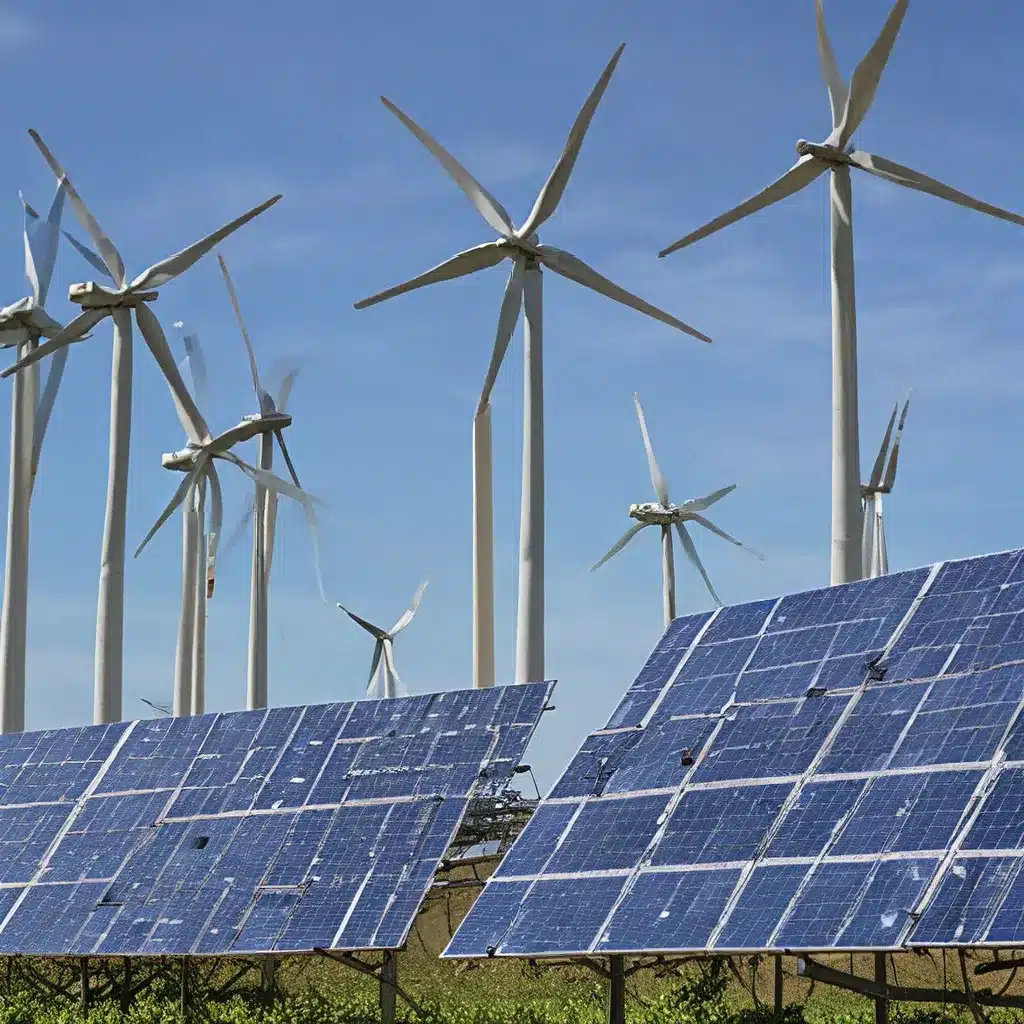
As someone who’s passionate about sustainability and the future of our planet, I’ve been closely following the developments in the renewable energy sector. It’s been fascinating to see how countries around the world are implementing policies and strategies to promote the adoption of clean energy solutions. In this article, I’ll be diving deep into the global landscape of renewable energy policies, exploring the key trends, challenges, and opportunities that are shaping the industry.
The Rise of Renewable Energy Worldwide
Let me start by painting a broader picture of the renewable energy landscape. According to the International Renewable Energy Agency (IRENA), the global share of renewable energy in total final energy consumption has steadily increased from 16.6% in 2010 to 17.1% in 2017. This may not sound like a massive leap, but when you consider the sheer scale of global energy consumption, even small percentage changes translate to significant real-world impacts.
What’s particularly encouraging is the rapid growth in certain regions. For example, Europe has seen its renewable energy share rise from 12.5% in 2010 to 17.5% in 2017, with countries like Denmark, Sweden, and Norway leading the charge. And in China, the world’s largest energy consumer, the renewable energy share has jumped from 9.5% to 12.4% over the same period.
IRENA data suggests that this upward trend is likely to continue, with renewable energy projected to account for a significant portion of the global energy mix by 2030 and beyond. But what’s driving this transition, and how are policymakers around the world shaping the future of renewable energy?
The Policy Landscape: Carrot, Stick, and Everything in Between
When it comes to renewable energy policies, governments have a diverse toolkit at their disposal. From financial incentives and regulatory frameworks to public awareness campaigns and technology investments, there’s no one-size-fits-all approach. Each country has to tailor its policies to its unique circumstances, resources, and energy needs.
According to the International Energy Agency (IEA), some of the most common policy levers used by governments include:
- Feed-in tariffs: These provide a guaranteed, above-market price for renewable energy producers, helping to make their projects financially viable.
- Renewable energy targets: Many countries have set ambitious goals for the share of renewable energy in their total energy mix, providing a clear roadmap for the transition.
- Tax incentives: From tax credits and deductions to accelerated depreciation, these financial incentives can make renewable energy investments more appealing.
- Biofuel mandates: Requiring a certain percentage of transportation fuels to come from biofuels, such as ethanol or biodiesel, can drive demand for these renewable alternatives.
- Net metering: This policy allows consumers with their own renewable energy systems, like rooftop solar, to sell excess electricity back to the grid, effectively reducing their energy bills.
These are just a few examples, and the specific mix of policies can vary greatly from country to country. But what’s clear is that governments around the world are getting increasingly creative and proactive in their efforts to accelerate the renewable energy transition.
Navigating the Challenges: From Grid Integration to Affordability
Of course, the path to a renewable-powered future is not without its challenges. Grid integration, cost competitiveness, and public acceptance are just a few of the hurdles that policymakers and industry leaders have to grapple with.
IRENA’s Global Renewables Outlook highlights the importance of grid modernization and energy storage solutions to seamlessly integrate large-scale renewable energy sources into the existing infrastructure. Countries like Germany and Denmark have made significant investments in this area, but many others are still playing catch-up.
Another key issue is the affordability of renewable energy technologies, especially for developing countries with limited budgets. Subsidies and innovative financing mechanisms can help bridge this gap, but policymakers have to be mindful of the long-term sustainability of these solutions.
And let’s not forget the societal and political challenges. Shifting away from fossil fuels can disrupt traditional industries and job markets, leading to concerns about energy security and economic impacts. Effective public outreach and stakeholder engagement are crucial to building broad-based support for the renewable energy transition.
The Future of Renewable Energy: Collaboration and Innovation
As I’ve delved into the topic, one thing has become abundantly clear: the future of renewable energy is not just about individual countries or companies – it’s about global collaboration and technological innovation.
Multinational organizations like IRENA and the IEA are playing a vital role in facilitating knowledge-sharing, setting industry standards, and fostering international cooperation. And private-public partnerships, cross-border investment, and technology transfer are becoming increasingly important as the renewable energy sector continues to evolve.
Here at Firewinder, we’re excited to be part of this dynamic and rapidly changing industry. Our team of renewable energy experts is constantly exploring new ways to help governments, businesses, and communities around the world unlock the full potential of clean energy solutions.
Whether it’s pioneering advanced battery storage technologies, optimizing grid integration, or developing innovative financing models, we’re committed to driving the renewable energy revolution forward. And we’re not alone – there’s a global community of researchers, innovators, and policymakers who are working tirelessly to create a more sustainable future.
So, as I wrap up this exploration of the global renewable energy policy landscape, I’m left with a sense of cautious optimism. The challenges are real, but the opportunities are abundant. And with continued dedication, collaboration, and a touch of creative problem-solving, I believe we can overcome the obstacles and unlock a brighter, cleaner energy future for all.

